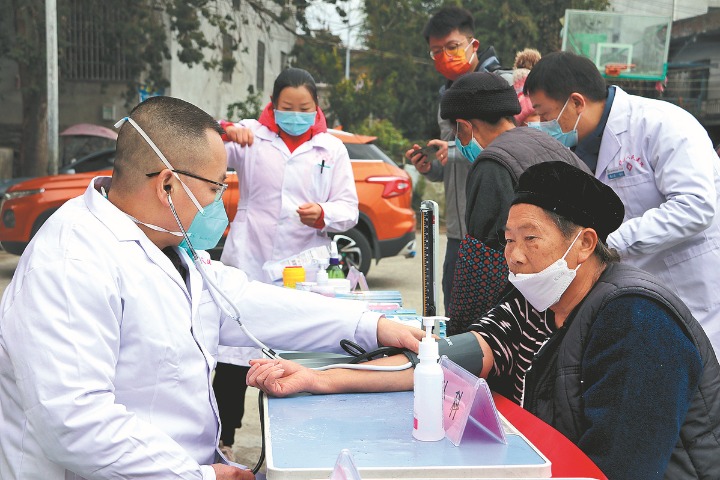How do Chinese citizens support themselves financially during home quarantine?
It is important to note that the information provided in this Series is intended for your general knowledge only and is not a substitute for professional medical advice or treatment.

Most Chinese people stay at home and avoid contact with others to prevent spread of the novel coronavirus amid the outbreak. Economic activities are suspended nationwide. However, the negative impacts on people's daily life are relatively limited. Here are the reasons.
First, the timing of outbreak overlaps with the Spring Festival, reducing the negative impact on income. The Spring Festival is a 7-day national holiday in China and most companies are temporarily closed except for those in tertiary sectors like retail, accommodation and catering. Most of the employees get their payments before the holiday, while those in informal sectors have prepared cash flow in advance. For example, migrant workers who are paid on daily basis usually return home to gather with their family two weeks before the Spring Festival and get back to cities two weeks after the holiday. The overlapping period between self-quarantining and family gathering during the holiday alleviates the impact of the epidemic on their incomes.
Second, the characteristics of rural communities where most Chinese live during the outbreak alleviate their financial pressure. As of 2018, the proportion of rural population was 42.1 percent in China, much higher than that in the US (18.0 percent), South Korea (17.3 percent) and Japan (5.7 percent). The percentage remains quite high even excluding migrant workers. In China, acquaintance society features rural communities, where rural residents benefit from interpersonal trust and intra-family transfers. Rural communities are also geographically and economically independent and could support residents' daily life even during lockdown for weeks. For those who plant most of food by themselves, the damage of the temporary isolation is also limited.
Third, the high saving rate in China cushions the economic blow from the virus outbreak. According to OECD data, the household saving rate in China was 36.1 percent in 2016, much higher than the average level in OECD countries. The saving provides a buffer for Chinese residents against the income cut-off.

Fourth, the vulnerable are supported by the social security system. At the end of 2018, fiscal expenditure on minimum living allowances reached 146.25 billion yuan with a coverage of 45.28 million people. During the epidemic period, most vulnerable people within the system could subsist on the allowance. In the meantime, facing the temporal hardships suffered by some low-income people, the government adopted a flexible process and raised allowances with an extended coverage immediately.
Fifth, a sound internet infrastructure allows employees to work from home. As of April 2018, 95 percent of villages and 99 percent of the population have access to 4G. The fiber broadband network covers more than 95 percent villages in China. Major telecom operators in China have been cutting down internet rates in recent years. With accessible, affordable and high-speed internet, employees can work from home and get paid amid the outbreak.
Last, with the government's strong actions to counteract the downward pressure on growth, the expectation on economic and employment keeps stable. Attentions are now paid on maintaining the normal economic and social order as the COVID-19 outbreak is being contained. Fiscal policies and monetary policies are adopted timely. Actions to lower the operating cost are taken in order to support the enterprises. An array of aid policies stabilize the expectations on economic development.
Home quarantine during the Spring Festival has not led to severe blows to residents' incomes in China. However, it should be admitted that the lockdown of Wuhan and Hubei has brought about some problems and the suspension of economic and social activities will lead to declining growth rate and increasing unemployment rate. This is also the reason why the Chinese government has adopted differentiated measures to resume production right after the outbreak is contained.
Author: Liang Xiaomin
Please feel free to contact us by sending your questions to question@chinadaily.com.cn or commenting on China Daily app. We will ask experts to answer them.














